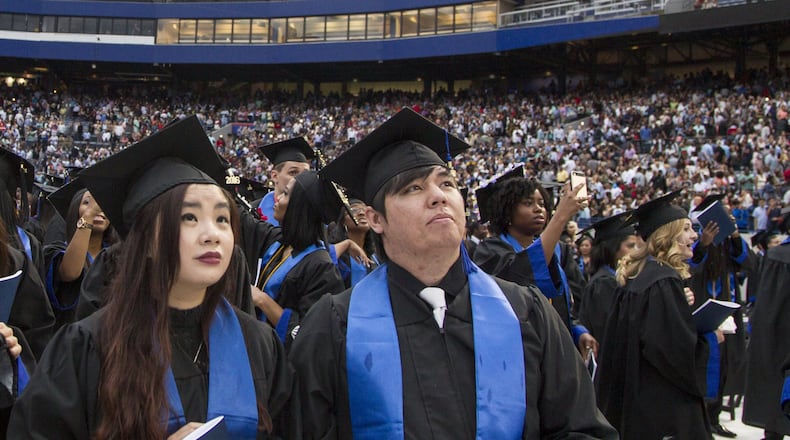Georgia State University leaders determined a few years ago they had a problem.
While numerous studies found the university has one of the most racially diverse student bodies in the nation, there was not that same level of diversity among its faculty.
There weren’t enough women in front of the classroom as well.
The university is taking steps to improve its diversity after a 13-member commission discussed potential solutions with faculty members last month. The ideas range from recruiting more female graduate students and nonwhite students to become faculty members to mandatory training for all department chairs, deans and search committee leaders to consider different methods when looking to fill teaching jobs. University President Mark Becker, who created the commission, said in a recent Atlanta Journal-Constitution interview that making its faculty more diverse is one of Georgia State's top goals.
Georgia State has about 53,000 students, the largest enrollment of any school in the state. About 75% of its students are nonwhite, but about 32% of its faculty are nonwhite, according to a 2018 state report. While about 60% of its students are women, 51% of faculty are female, the report shows. The university had about 1,300 full-time faculty members last year.
Another troubling statistic for university leaders concerned about diversity is the commission’s report shows about 75% of teachers on track to become professors are white and most are men.
Wendy Hensel, who last month became the university’s provost and senior vice president for academic affairs, said there are no goals for what faculty diversity should look like in the future, but the plan is to “replicate” student enrollment. The university also wants to hire more faculty members who are LGBTQ or have a disability, she said.
> RELATED: Pay gaps persist for female professors in Georgia
Several students were unaware of the effort, but believe it’s important.
“We need more people who look like us,” said Daija Lee, 18, a first-year student from McDonough who is African American.
Lee said she hasn’t had any African American women teaching her classes thus far and she’s noticed. She believes having professors who look like her can make it easier to discuss troubles she may have in a class.
“They know us, so we can relate to them better,” she said Friday morning on the Atlanta campus.
“Georgia State is a school of diversity, so it’s good to bring faculty (members) to connect with the diverse students on campus,” said DeMarcus Patterson, 21, a third-year biology major who is African American.
Georgia State leaders recognize the current diversity gaps hurt efforts to recruit students to become faculty.
“It’s hard to see your role (teaching) unless you see someone who looks like you at the front of a classroom,” Hensel said in an interview earlier this month.
Georgia State’s statistics mirror national numbers on faculty diversity, according to National Center for Education Statistics data. Faculty diversity is being discussed more frequently on college campuses as its students become more racially diverse. About 70% of the University System of Georgia’s faculty were white and 54% were men last year, according to a systemwide report. Georgia State is part of the University System.
An estimated 1,200 students, educators and college recruiters listened to discussion on the issue and other topics as part of a four-day national conference in Atlanta hosted by the Southern Regional Education Board’s Doctoral Scholars Program. Speaker Shirley Malcom said greater faculty diversity, particularly in STEM fields, is a numbers issue.
“If we ignore (the increasing number of women and minority students), pretty soon (colleges) are going to run out of people,” Malcom, who is involved in an organization trying to increase diversity in STEM, told the audience Friday morning.
The Georgia State commission’s recommendations included doing more to retain nonwhite and female faculty through more “check-in” sessions with them to discuss any concerns about working conditions. Another suggestion was that Georgia State create a center for faculty research that may draw more diverse faculty.
Like many schools, Hensel said, Georgia State has shared information about job openings in many places and hoped the applicant pool will be diverse. “Post and pray,” she called it.
Hensel, who was previously dean of the university’s College of Law, said she’s eager to see Georgia State use predictive analytics — which it has used to retain and graduate more students — to track faculty hiring.
“We’ve done it before in the student area, so we’re hoping to do it here,” she said.
GEORGIA STATE
BY THE NUMBERS
25.7 — the percentage of white students.
68.7 — the percentage of full-time white faculty members.
60.1 — the percentage of female students.
51.2 — the percentage of full-time female faculty members.
Source: University System of Georgia
About the Author
Keep Reading
The Latest
Featured





